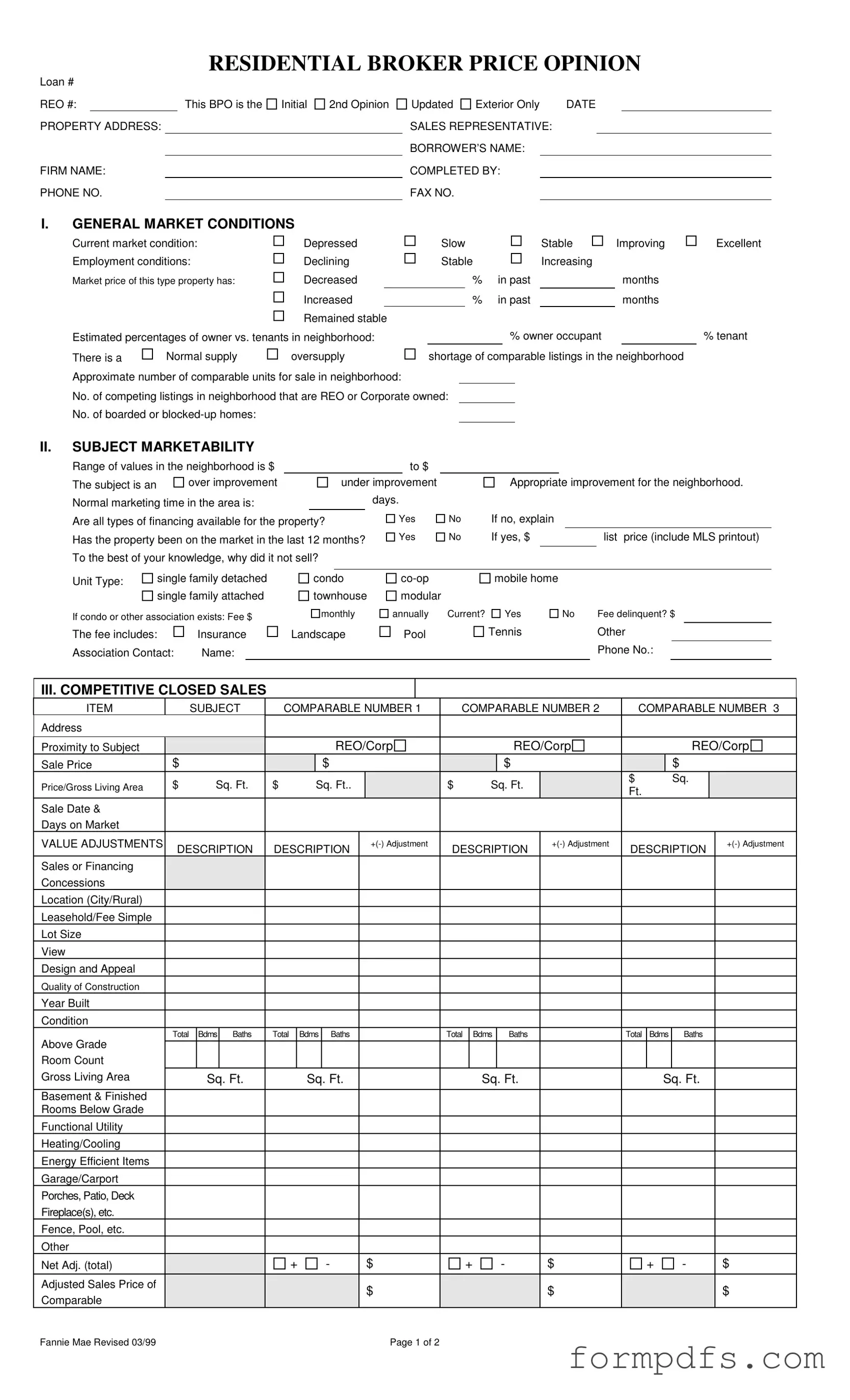What is a Broker Price Opinion (BPO)?
A Broker Price Opinion is a document that provides an estimate of a property's value, typically prepared by a real estate broker or agent. It assesses the current market conditions, compares similar properties, and evaluates the subject property’s features. BPOs are often used by lenders to determine the value of a property in situations such as foreclosures or short sales.
How is a BPO different from an appraisal?
While both a BPO and an appraisal aim to estimate a property's value, they differ in their purpose and process. An appraisal is a more formal evaluation conducted by a licensed appraiser, often required by lenders for mortgage purposes. A BPO, on the other hand, is typically less formal and quicker to produce. It is based on the broker’s expertise and market knowledge rather than a detailed analysis of the property.
What information is included in a BPO?
A BPO includes various sections that cover general market conditions, the subject property's marketability, competitive closed sales, and competitive listings. It typically details the property's address, condition, and any necessary repairs. Additionally, it compares the subject property to similar properties that have recently sold, providing insights into the local real estate market.
Who typically requests a BPO?
Real estate agents, lenders, and financial institutions commonly request BPOs. They may need this information to make informed decisions regarding the sale or financing of a property. Investors looking to purchase distressed properties may also seek BPOs to understand the potential value and necessary improvements.
How is the value determined in a BPO?
The value in a BPO is determined through a combination of market analysis and comparisons with similar properties. Brokers assess the current market conditions, review recent sales of comparable properties, and consider the unique features of the subject property. Adjustments may be made based on differences in size, condition, and location to arrive at a fair market value.
What factors can affect the accuracy of a BPO?
Several factors can influence the accuracy of a BPO. These include the broker’s experience, the quality of the data used, and the current state of the real estate market. Additionally, if the property has unique characteristics or if there are significant changes in the market since the last comparable sale, these can lead to variations in the estimated value. Therefore, it’s essential for the broker to stay informed about local trends and conditions.
